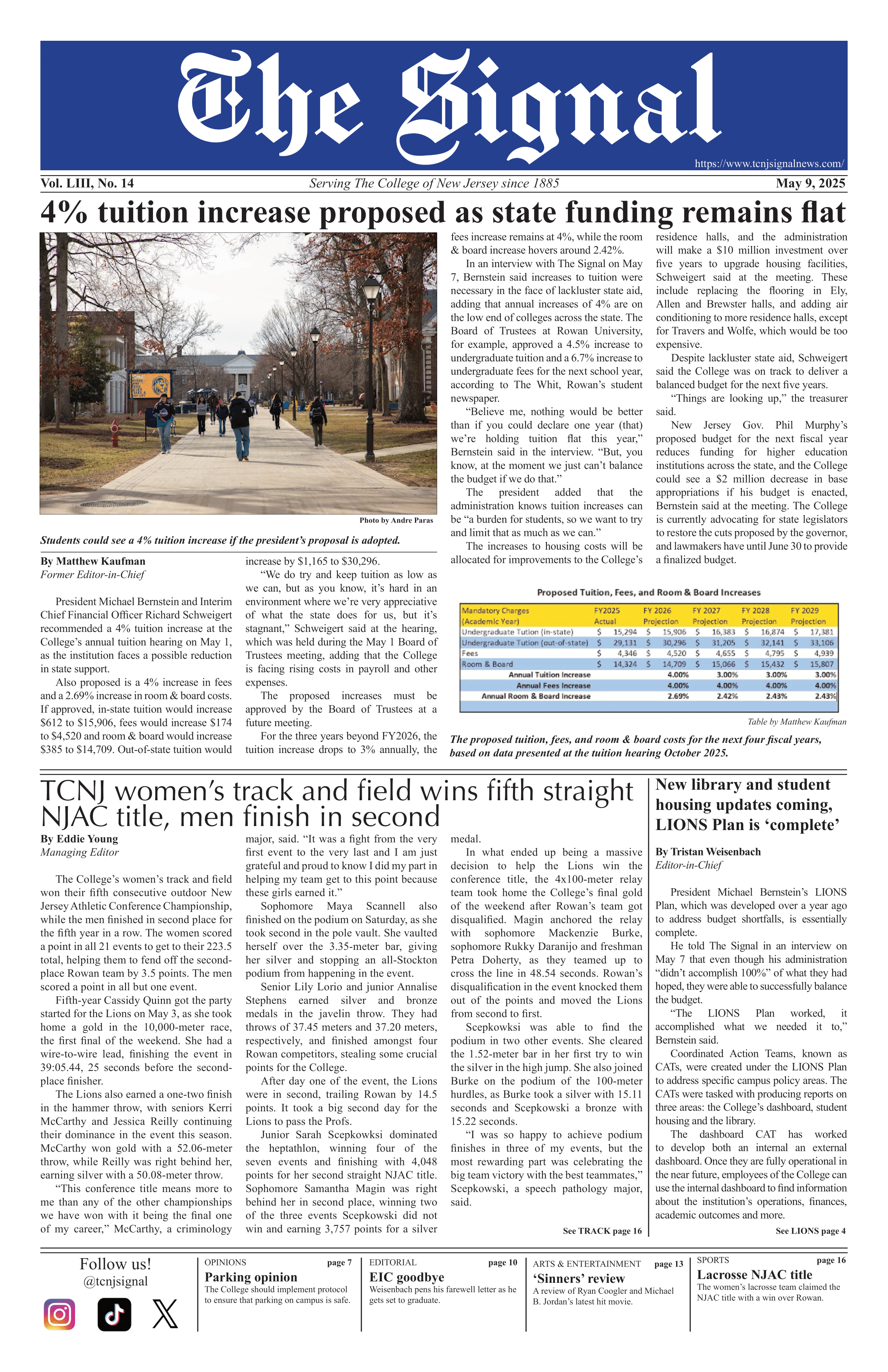New text message from TCNJ Emergency Alerts.
It’s a message most students at the College have received at one point or another during their time here. Usually, the message behind the text is something innocuous — this year was dominated by the friendly reminders that classes were cancelled due to ice and snowstorms.
But, on occasion, there’s something more serious within the texts and emails. A student missing, a bear on campus or a burst water main are all examples of messages the College has sent out to its students in
the last three years that qualified as emergencies.
The third, perhaps more sinister category of these messages, relates to crimes committed against students here, and some of those concern events that don’t happen in the bubble of the College’s campus. It begs the question: Just how safe is it to live off campus in Ewing, as many members of the College community do?
By looking at data from the New Jersey State Police’s Uniform Crime report and comparing that data to the College’s own Annual Security and Fire Safety Report, the difference between the number of reported crimes in Ewing and on campus vary greatly.
In 2012, the most recent year in which these statistics are available, a total of 83 violent crimes were committed in Ewing. Falling into this category was murder, with two in Ewing, rape with six, robbery with 35 and aggravated assault with 40. According to the College’s numbers, the on-campus numbers for violent crime had a grand total of one offense in 2012, with a single forced sexual assault. Even looking back a few more years, the College’s on-campus numbers do not change too much, also reporting a single forced sexual assault in 2011 and two such instances in 2010.
In terms of how many violent crimes are reported, living off campus is a more dangerous place than on campus. Looking a bit harder at the data, however, those simple numbers are not the most accurate telling of the information. When you factor in that Ewing’s violent crime rate is just 2.3 per 1,000 — which means that approximately one in every 500 people in Ewing will have a violent crime committed against them — the situation does not look quite as bleak, especially when compared to more dangerous areas. Trenton, for example, has a violent crime rate of 14.9 per 1,000, making Ewing much safer in comparison.
Other towns similar to Ewing, such as Hamilton, also have similar numbers in this area, with Hamilton sporting a violent crime rate of 2.2 per 1,000.
Not much of this seems to matter to many students at the College, however — they seem to go by how Ewing feels in terms of safety rather than the hard data. In fact, most of the students who lived off campus declined to comment for this article, with one student in particular citing an event of vandalism that occurred at his or her off-campus house.
Those off-campus students who didn’t move here, however, seem to be much less frightened by Ewing than those who did.
“I’ve lived in Ewing for 21 years,” senior physics and secondary education dual major Michael Wijkowski said. “I feel very safe here, yes, and I’d walk around here by myself at night.”
It can also be noted when comparing the dangers of off campus and on that there is a difference in the number of police per square foot available between a relatively small campus and a larger town like Ewing. Ultimately, the police presence could certainly be a contributing factor in why students are inclined to consider the campus a much safer environment.
“I see policemen more often on campus than I do off campus,” Wijkowski said. “I think I hear sirens maybe once a month.”
No matter how many more crimes are reported per year in Ewing than on campus, one set of sirens per month most likely doesn’t have much of a major impact on the day-to-day lives of students who live within a few miles of the safety and security of the campus boundaries. It might not be strictly as safe living off campus as it is living on, but the chances are 499 out of 500 that an individual student will not see a difference.






